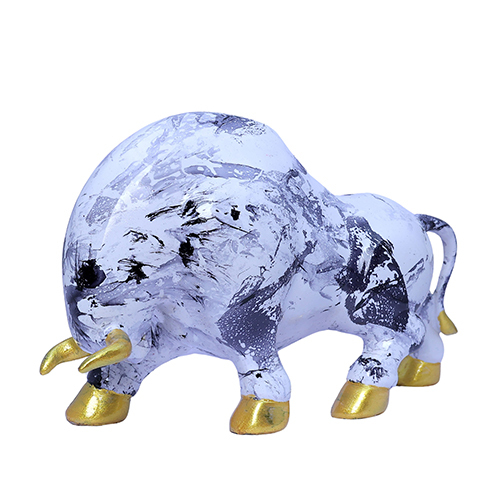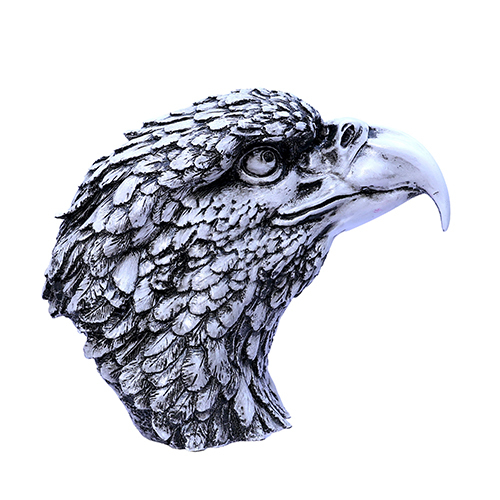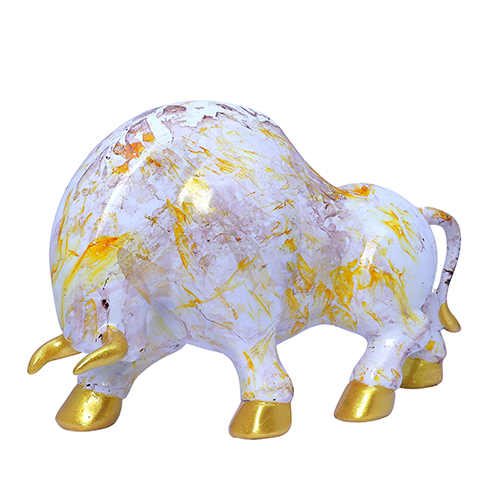Bull Statue Shading Black
Product Details:
- Mount Type Table top
- Design Type Plain
- Height 5 Centimeter (cm)
- Length 5 Centimeter (cm)
- Material Resin
- Product Type Sculpture
- Style Modern Arts
- Click to View more
Bull Statue Shading Black Price And Quantity
- 2499 INR/Piece
- 1 Piece
Bull Statue Shading Black Product Specifications
- 5 Centimeter (cm)
- Modern Arts
- Home Decoration
- 5 Centimeter (cm)
- Sculpture
- Resin
- Table top
- Animal
- Plain
Bull Statue Shading Black Trade Information
- 10 Piece Per Day
- 1 Days
Product Description
Bull statues have a fascinating cultural significance across various contexts. Here are a few notable mentions:
-
Charging Bull (Wall Street Bull): This iconic bronze sculpture stands in Bowling Green, New York City. Created by artist Arturo Di Modica, it was placed there in December 1989 without permission. Despite its unauthorized installation, it quickly became a symbol of Wall Street and the financial districts strength and prosperity.
-
The Bull of Nimrod: This ancient Mesopotamian statue, believed to date back to the 3rd millennium BCE, depicts a bull standing on a pedestal. It was discovered in modern-day Iraq and is associated with the ancient city of Nineveh. The bull is often linked to the god Marduk and symbolizes strength and power.
-
Taurus the Bull (Zodiac Sign): In astrology, the bull represents the Taurus zodiac sign, which is typically associated with qualities like stubbornness, determination, and stability. Taurus is an earth sign, reflecting traits of being grounded and practical.
-
Bull Statues in Ancient Greece: Bulls held significant religious and symbolic importance in ancient Greek culture. They were often sacrificed to gods like Zeus and Poseidon and featured prominently in Greek mythology. Statues of bulls could be found in temples and other religious sites.
-
Bull Statues in Hinduism: In Hinduism, the bull is associated with Lord Shiva and is known as Nandi. Nandi is depicted as a bull sitting outside Shivas temple and is considered the gatekeeper and primary devotee of Shiva.
FAQs of Bull Statue Shading Black:
Q: What is the height of the Bull Statue Shading Black?
A: The height of the Bull Statue Shading Black is 5 centimeters (cm).Q: What is the length of the Bull Statue Shading Black?
A: The length of the Bull Statue Shading Black is 5 centimeters (cm).Q: What is the material used to make the Bull Statue Shading Black?
A: The Bull Statue Shading Black is made of resin.Q: What is the theme of the Bull Statue Shading Black?
A: The theme of the Bull Statue Shading Black is animal.Q: What is the use of the Bull Statue Shading Black?
A: The Bull Statue Shading Black is used for home decoration in modern arts style.
Price:
- 50
- 100
- 200
- 250
- 500
- 1000+



















 Send Inquiry
Send Inquiry Send SMS
Send SMS Call Me Free
Call Me Free
